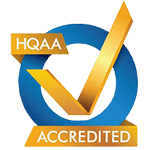Managing Pressure Intolerance With CPAP Therapy: Tips and Strategies for Better Sleep
CPAP therapy is a highly effective treatment for Obstructive Sleep Apnea (OSA); however, adjusting to the air pressure of the therapy can be challenging for some people. Pressure intolerance, as it is known, is a common issue when starting CPAP therapy that can cause discomfort and interfere with sleep quality.
What Are the Effects of Pressure Intolerance?
Pressure intolerance can lead to discomfort, air leaks, and difficulty falling or staying asleep. Some common symptoms of pressure intolerance include nasal congestion, headaches, dry mouth, and facial pressure.
How to Manage Pressure Intolerance
- Practice wearing your mask properly – Properly wearing a well-fitting mask is essential for successful CPAP therapy. Ensure your CPAP mask is properly adjusted and fitted to your face to prevent air leaks and discomfort.
- Implement desensitization techniques – Try practicing with your mask and machine for 15-20 minutes in the evening while relaxing, reading, watching TV, or using your phone. Practice can help you gradually get used to the feeling of the mask and pressure, making it easier to tolerate during more extended periods of sleep.
- Try the Ramp feature – Most CPAP machines have a Ramp feature that gradually increases the pressure over a set period. The Ramp feature can help you slowly get used to the air pressure and ease you into therapy, making it easier to tolerate.
- Use a humidifier – A heated humidifier can add moisture to the air you breathe, which can help alleviate discomfort and dryness caused by pressure intolerance.
- Speak with your Sleep Coach – Our Sleep Coach can help determine if your pressure or comfort setting needs to be adjusted or if a different mask would be more comfortable for you.
- Consult with your Physician – If you’re experiencing pressure intolerance despite trying the above strategies, speaking with your physician is essential. They can evaluate your therapy and ongoing symptoms and help to recommend solutions, such as:
- Adjusting pressure settings – Your physician can write you a new prescription to change your pressure settings to a more comfortable level.
- Trying BiPAP therapy – If you have attempted CPAP therapy and cannot tolerate the pressure, your physician may suggest a Bi-level Positive Airway Pressure (BiPAP) machine, which provides variable pressure levels during inhalation and exhalation. Consult with your physician to determine if this option is right for you.
Maximizing the Benefits of CPAP Therapy With Biofeedback
ResMed’s MyAir platform can help you monitor your CPAP therapy and track your pressure tolerance over time. Regularly checking your pressure tolerance can ensure you receive the optimal pressure level to keep your airway open during sleep.
To download the MyAir app, visit the App Store or Google Play on your smartphone or tablet and search “MyAir by ResMed”. Once you’ve found the app, click “Install” to start downloading. Once the download is complete, open the app and follow the prompts to set up your account and connect it to your CPAP machine.
Don’t hesitate to contact your Sleep Coach for guidance and support throughout your CPAP therapy journey! With the proper clinical support and adjustments, you can successfully manage pressure intolerance and enjoy the many benefits of CPAP therapy for better sleep and overall health.
Sleep Coach Contact
Phone: 888-276-3237 Ext. 5
Email: SleepCoach@qualitydme.com



